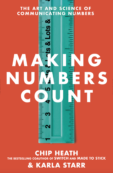[Via a friend at McKinney] If you want some practice at making ideas stickier, I have a great case study for you. Rope aside 30 minutes and follow along with the process below. It concerns the work of a group called The Girl Effect. Here’s the game plan:
1. Start here. It’s a pdf document with statistics demonstrating the value of investing in girls in the developing world. (For example: “When women and girls earn income, they reinvest 90 percent of it into their families, as compared to only 30 to 40 percent for a man.”) Print out this document (and the instructions for step 2) and slowly move away from your computer.
2. With PDF in hand, give yourself this mission: To boil it all down. No one is going to read all these stats, and even if they do, they won’t remember them. They certainly won’t be moved to action by them. So how can you get people *excited* about “girl investment”? Imagine that you’ve got 2 minutes of the audience’s attention to make your case. How would you translate the data into something simple, emotional, specific? (By the way, just by thinking about this, you’re already ahead of the game — most social enterprises I’ve worked with would have simply published the PDF and declared victory…)
3. No, really, take a minute and think about it. It’ll make it more fun to compare your approach to theirs.
4. OK, now watch their 2-minute Youtube video and come back here for some postgame analysis.
5. This is a textbook sticky idea. (Forewarning: At this point, I’m going to geek out and deconstruct the video piece by piece.) If you’ve read Made to Stick, you’ll notice the elements. It starts with a schema violation (“So what else is new?”). Then there’s a curiosity gap: “What if there was an unexpected solution… Would you even know it if you saw it?” Then, there’s the surprise: “A girl.” The cumulative effect of these elements is critical: They’ve got our attention. We’re on the hook.
They’ve “paid” for our attention, and now they’ve got to cash it in to explain what they want. How do you explain “girl investment”? They make it concrete by asking you to visualize a specific girl. They tell the story of what the investment does for her and the people around her. (Notice, by the way, that they manage to make it concrete despite using only text blocks — an impressive feat.) The concrete elements build up (the husband, the school uniform, the loan, the cow, the village council). Suddenly, they’ve explained a complicated idea to you without making you feel like you’re receiving instruction. (BTW, the team wisely didn’t assume that it would be self-evident that investing in girls is “the solution.” They took the time to explain their logic, in a simple, but not oversimplified, way.)
At this point, they’ve got a credibility problem. You now understand what they mean by investing in girls, but why would you believe that the “girl effect” can make a dent in big global problems? The approach they use is “micro –> macro”. First, they paint a picture of a single girl. They show how the investment has cascading effects in her family and in her community. Then, they shift to the macro. “Multiply that by 600 million girls in the developing world…” [The zooming-out effect with the dots is a nice touch to make this more concrete.] This micro/macro approach also works well for entrepreneurs — I’ve often seen entrepreneurs highlight a single, vivid customer situation and then switch to the macro (“Our market research shows that there’s a $1.2 billion market made up of 181,000 customers with the same needs as this one.”)
Then comes the wrap-up. ideally, this will inspire you and move you closer to action. I love the line: “Invest in a girl and she will do the rest.” It makes you feel like you’re on a team — you do your part and she’ll do hers. Which brings me to my one (and really only) quibble: I don’t like the closing line … “It’s no big deal. Just the future of humanity.” To me, this line was a bit jarring … just when you’re feeling positive and empowered, all of the sudden you’re hit with a tinge of guilt. (“It’s on you, pal — the future of humanity.”) I think it would have been stronger to end with the “Invest in a girl and she will do the rest.”
But let’s not quibble. This is a brilliant video, and I predict it will be seen by lots and lots of people. Even better, it will motivate action. [Here’s The Girl Effect web site.]



